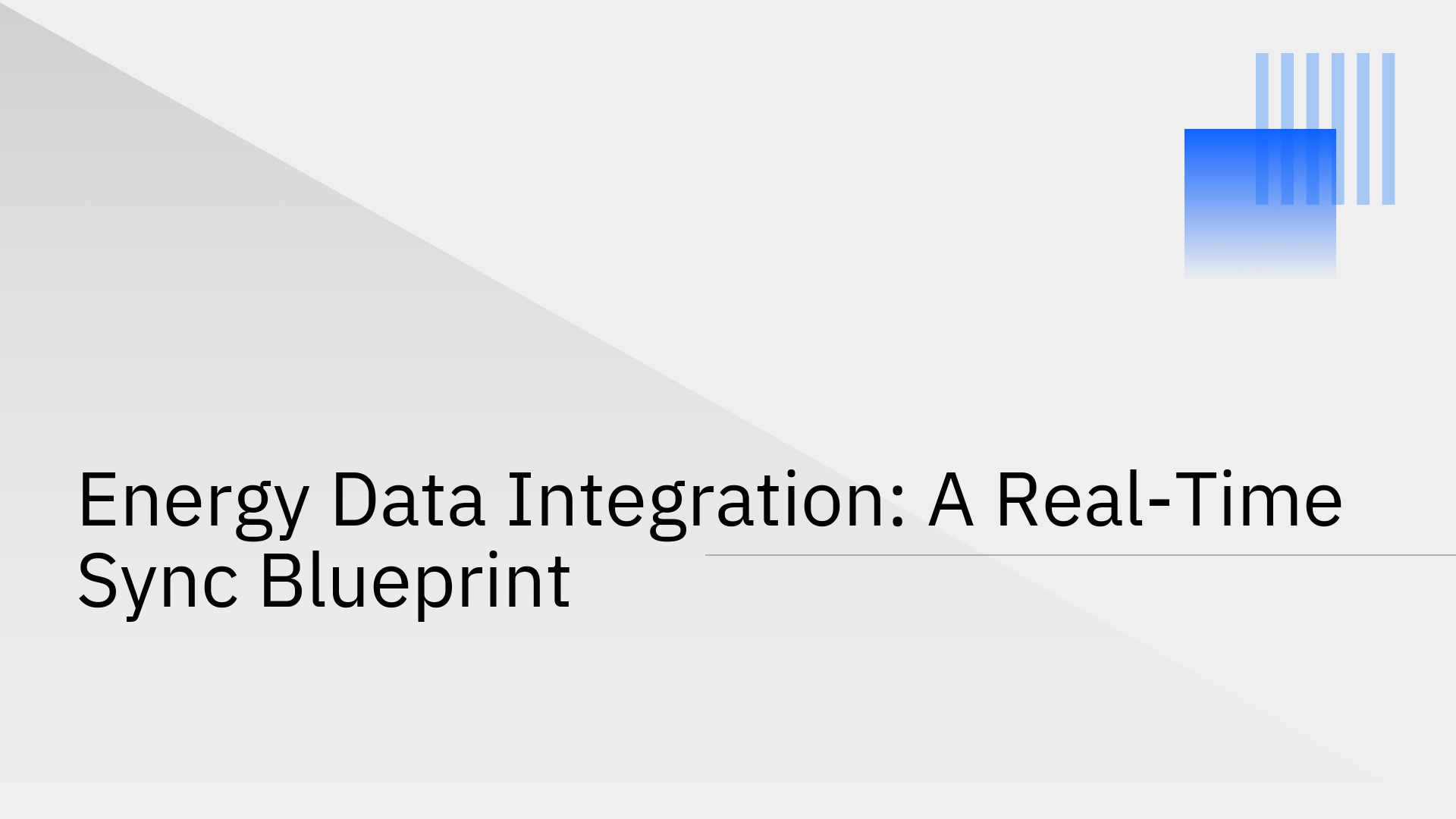
The energy sector is in the midst of a massive transformation driven by decarbonization, decentralization, and digitalization. In this new landscape, data is the most critical asset. Information from smart grids, IoT sensors, and distributed renewable sources must be processed instantly to maintain operational integrity.
Real-Time Data Integration for the Energy Industry is no longer an advantage, it's the core requirement to unlock efficiency, guarantee grid stability, and enable predictive maintenance. This article provides a definitive blueprint for achieving the real-time data synchronization your organization needs to lead the charge.
For years, energy companies have grappled with fragmented data spread across multiple legacy systems, creating significant operational hurdles.
These data silos lead to inconsistent data quality, ballooning operational costs, and complex security challenges [7]. In an industry where decisions are measured in megawatts and milliseconds, delayed data analysis can directly result in millions of dollars in losses from unforeseen equipment failures and inefficient resource allocation [1].
Avoiding these issues requires a deep understanding of the common integration mistakes that lead to them. You can learn about 7 common data integration pitfalls and how to avoid them.
Organizations in the energy sector consistently face a set of common hurdles when trying to unify their data ecosystems. These include:
A successful integration strategy is built on several core pillars that ensure data is not only connected but also timely, reliable, and secure. This is your blueprint for building a resilient data infrastructure.
Your infrastructure must be capable of ingesting massive volumes of time-series data from distributed sources like sensors, SCADA systems, and grid assets. A modern integration platform must process this data in real-time to make it immediately available for critical analytics applications.
Frameworks like LF Energy's Real Time Data Ingestion Platform (RTDIP) are architected specifically to handle the scale and speed that the energy industry demands, processing streaming data into an accessible format for engineers and data scientists [3].
In the modern energy system, consumers are also producers ("flexsumers"), creating a dynamic, two-way flow of both energy and data. This requires bi-directional sync to maintain equilibrium. Leading energy providers like E.ON are already using real-time data streaming to manage this bidirectional flow and power Europe's green transition [2]. To effectively balance supply and demand, it is essential to achieve real-time data consistency across all operational and customer-facing systems.
The energy sector operates under stringent security and compliance standards. Any data integration solution must be built on a foundation of security, featuring complete audit trails, data residency controls, and advanced privacy protections.
This includes support for multiple protocols and low-latency protocol translation to securely handle diverse data sources without introducing risk [5]. For energy companies, partnering with a platform that understands these requirements is non-negotiable, which is why Stacksync for Energy is designed with security and compliance at its core.
Stop reacting to failures and start preventing them. By integrating sensor and operational data in real time, you can power AI-driven analytics that accurately forecast equipment failures.
The benefits are immediate and substantial: optimized maintenance schedules, drastically reduced unplanned outages, and a longer, more productive asset lifespan. Platforms like Stacksync provide the real-time data integration for the energy industry needed to make predictive maintenance a reality.
A unified data stream from solar, wind, battery storage, and grid assets enables precise, real-time monitoring and control. This capability is essential for load balancing, managing the inherent volatility of renewable sources, and optimizing energy distribution across the grid.
As the industry moves toward digital interfaces and smart metering, data streaming is the key technology driving modernization and innovation [4].
True operational intelligence comes from a holistic view of your organization. This requires connecting field-level operational technology (OT) with back-office IT systems like CRMs and ERPs.
A unified view empowers every department—from engineering and finance to customer support—to make faster, more informed decisions. You can connect every business system and simplify your data integration to break down silos and create a single source of truth.
Stacksync is the platform that brings this blueprint to life, offering purpose-built features that directly address the unique challenges of the energy sector. Don't just plan your integration strategy, execute it instantly.
The success of the modern energy company depends on its ability to overcome data integration challenges with a modern, real-time approach. The blueprint is clear: a strategy built on high-volume ingestion, true bi-directional synchronization, and robust security is the only path forward.
With a platform like Stacksync, you can finally stop spending time on complex API plumbing and start building the efficient, sustainable, and reliable energy systems of the future.
Ready to build your blueprint? Explore our Guides or start a free trial to see Stacksync in action today.